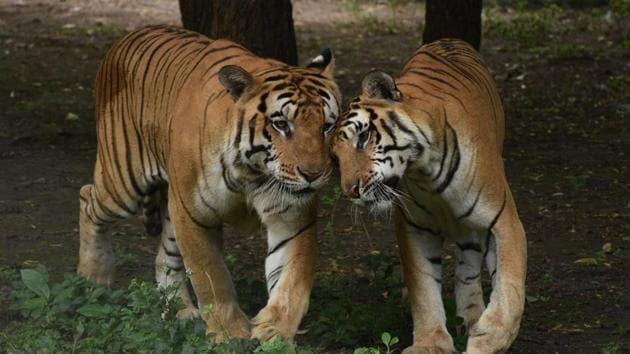It’s time to build on the success of our tiger conservation efforts
At the launch of the 2018 census report, PM Modi said two things: First, it is possible strike a balance between development and conservation, and, second, India will build more homes for citizens, and at the same time “create quality habitats for animals”. Doing both these things in a country hungry for development will not be an easy task. But, hopefully, the PM will keep his word.
Prime Minister Narendra Modi on Monday released the All India Tiger Estimation Report 2018, and said India has emerged as of one of the biggest and safest habitats for big cats in the world. According to the report, the tiger population has grown from 2,226 in 2014 to 2,967 in 2018. The tiger census, which is prepared every four years by the National Tiger Conservation Authority, is a mammoth operation. For the 2018 report, nearly 44,000 field staff covered 381,400 km of forested habitats in 20 tiger-occupied states, and set up camera traps at 26,838 locations that led to 76,651 photographs of tigers, and 51,777 of leopards. This is not an easy task, since big cats are large, solitary predators that hate being seen. But collecting data is just one part of the exercise; the other critical part is the analysis of the data. The project teams took advice from experts across the world. According to a report in The Conversation, this included pattern-matching experts who could identify whether a photo of a tiger taken in the monsoon matched that of a tiger taken in the dry season; machine learning experts to speed up species identification; and spatial analysis experts to estimate the populations of tigers and their prey.

While the census results are encouraging, let’s not forget last week’s heartbreaking attack on a tiger inside Uttar Pradesh’s Pilibhit Tiger Reserve, a protected area, by villagers. The assault shows the real challenges at hand — keeping big cats safe not just inside the protected areas, but also outside it; hunting and poaching; and illegal trade of animal parts, and preventing habitat and loss of prey species due to developmental activities. For instance, the Panna Tiger Reserve in Madhya Pradesh lost all its tigers to poaching by 2009, and then successfully reintroduced tigers back into the jungle. Instead of building on this success, the reserve today faces a new threat — the Centre’s Ken-Betwa river linking project will submerge a substantial portion of the tiger habitat.
At the launch of the 2018 tiger census report, Mr Modi said two things. First, it is possible to strike a balance between development and conservation. Second, India will build more homes for citizens, and, at the same time “create quality habitats for animals”. Doing both in a country hungry for development will not be an easy task. But, hopefully, the PM will keep his word.






